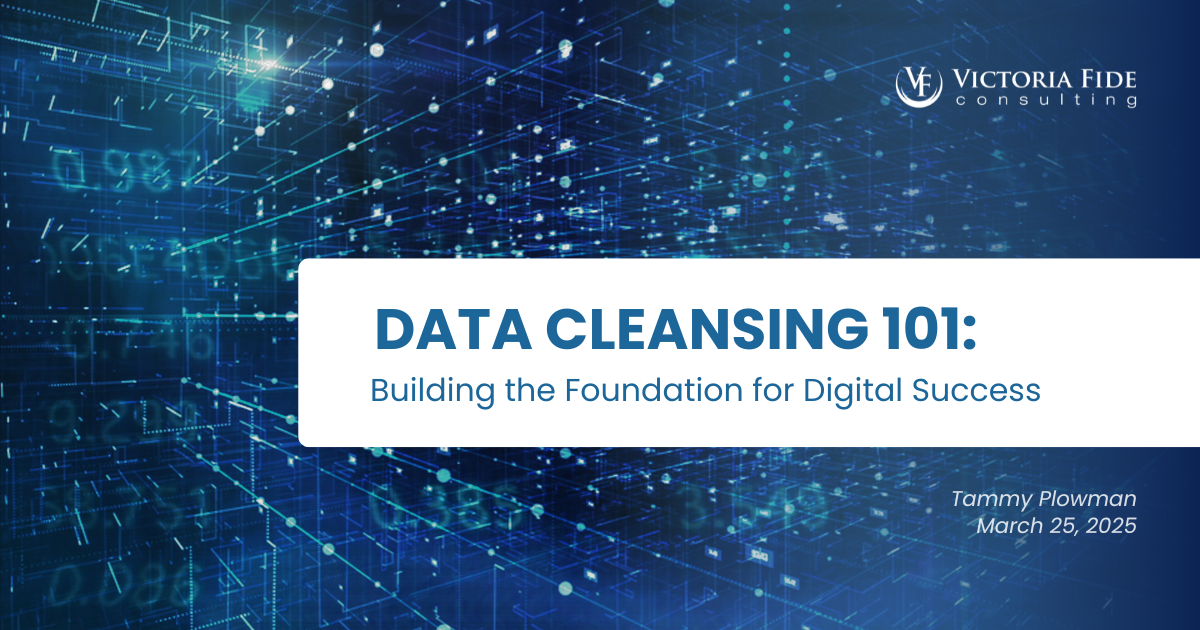
Transferring data between systems is a vital component of any digital transformation initiative. When planning this migration, cleansing of the data helps organizations avoid the “garbage in, garbage out” effect when transitioning systems. The “garbage in, garbage out” (GIGO) effect refers to the principle that poor-quality input data will result in poor-quality output, regardless of how advanced or sophisticated a system is. Therefore, if an organization transfers inaccurate, outdated, duplicate, or incomplete data into a new system, it will inevitably lead to inefficiencies, errors, and operational challenges down the line.
High-quality, essential, and reliable data are the desired outcome of a well-executed data migration strategy. In this article, we will explore how a structured approach to data cleansing minimizes risks and maximizes the value of digital transformation efforts.
Table of Contents
The Role of Data Migration in Digital Transformation Projects
Data migration plays a vital role in digital transformation by:
✔ Enabling process automation by ensuring clean, structured data feeds into modern systems.
✔ Improving business intelligence and analytics by ensuring accurate reporting and insights.
✔ Enhancing customer experiences by maintaining reliable, up-to-date information.
✔ Reducing operational inefficiencies by eliminating redundant or incorrect records.
A successful data migration strategy must include data cleansing as a core component to prevent errors and inefficiencies in the new system as well as ensure accurate reporting.
To learn more about data migration, see these related blogs:
- https://victoriafide.com/what-is-data-migration/
- https://victoriafide.com/mastering-d365-data-migration-flawless-go-live/
Don’t Migrate the Mess: The Role of Data Cleansing in Migration
Data cleansing (or data scrubbing) is the process of identifying, correcting, or removing errors, inconsistencies, and redundant data before migrating it to a new system. This data migration activity mitigates the risk of carrying over flawed data that can disrupt operations and requires significant time and resources to correct.
The data cleansing process involves several key activities, such as:
- Identifying and removing duplicate records to avoid unwanted entries in the new system.
- Standardizing data formatting (e.g., capitalization, address structures) to achieve consistency.
- Validating existing data to check for and address missing values, incorrect entries, or outdated information.
- Eliminating obsolete or irrelevant data that no longer serves business needs.
- Identifying and managing orphaned records to ensure that proper data relationships are maintained.
- Ensuring compliance by verifying data meets regulatory requirements before migration.
In the digital age, data is the bedrock of business operations, strategic decision-making, and innovation. Ensuring data integrity through cleansing processes is crucial for establishing a reliable system foundation.

Transformation is not easy, but it doesn’t have to be impossible. Take control of your project’s success today and schedule a free 30-minute consultation to find out how Victoria Fide can equip you for transformational success.
The Price of Poor Data Quality
Failing to clean data before migration can introduce systemic issues that become increasingly difficult—and costly—to resolve post-implementation. Here’s how unclean data affects different aspects of a business.
Operational challenges may arise in the form of disruptions in workflow, errors in transactions, and inaccurate reporting. By introducing duplicate, outdated, or inconsistent records into the new system, the following issues may arise.
- Transaction Errors: Incorrect or missing customer, supplier, or inventory data can lead to delayed or failed orders, incorrect or misrouted shipments, or invoicing errors.
- Compromising Relationships: Transactional errors directly impact customer satisfaction and may create challenges with suppliers. Users of the system will grow frustrated as they struggle to perform their work.
- Process Inefficiencies: Employees waste time manually resolving errors, or searching for and correcting data, slowing down operations.
- Flawed Reports & Analytics: Poor data quality skews financial reporting, sales forecasting, and operational KPIs, which may lead to misinformed business decisions.
Consider the aftermath of these scenarios post-CRM implementation: Sales representatives, relying on migrated data, faced multiple customer profiles with conflicting purchase histories, complicating personalized service and accurate follow-ups. Additionally, duplicated customer data led to customers receiving multiple marketing emails and misdirected invoices, eroding trust and tarnishing brand reputation.
Cluttered databases increase technical debt, which refers to the long-term cost of maintaining systems.
- Bloated Databases: Redundant or unnecessary records can slow down queries and increase data storage costs.
- Integration Failures: Mismatched data structures and formatting inconsistencies can lead to system integration errors.
- More Frequent Maintenance & Fixes: Teams spend excessive time troubleshooting and fixing issues rather than focusing on innovation.
For instance, an ERP migration without proper data cleansing can lead to thousands of obsolete part numbers, complicating product management and making the system sluggish and inefficient.
Organizations that implement data cleansing processes can significantly enhance system integrity and accelerate the success of their digital transformation journey.

Data Cleansing Best Practices Every Professional Should Know
With the high cost of poor data quality, it’s imperative to cleanse your data prior to executing a data migration.
Establish Data Quality Standards
Establish clear criteria for what constitutes high-quality data. This includes setting data formats, values, and consistency standards across different datasets. These rules ensure that all data meets the requirements before it is migrated.
Analyze Data
Conduct a thorough data analysis to uncover patterns, anomalies, and errors. This helps you understand the current state of your data, identify areas that need cleansing, and ensure that the data aligns with your quality standards.
Collaborate With Stakeholders
Engage business stakeholders who are familiar with the data and its usage. Their insights are invaluable for validating data quality and ensuring the cleansed data meets business needs. Collaboration helps identify critical data elements and understand the context in which the data is used.
Automate Where Possible
Leverage automated tools to streamline the data cleansing process. These tools can efficiently handle tasks such as removing duplicates, enriching data with additional information, and validating data against predefined rules. Automation reduces manual effort and increases accuracy. Talend, Informatica, and Alteryx are just a few of the tools readily available.
Document Processes
Maintain detailed documentation of all data cleansing activities. This includes the rules applied, processes followed, and decisions made during the cleansing process. Documentation ensures transparency, facilitates audits, and provides a reference for future data cleansing efforts.
Validate Cleansed Data
Conduct rigorous testing of the cleansed data to verify its accuracy and integrity. Multiple test iterations help identify any remaining issues and ensure the data is ready for migration. Validation ensures that the data will function correctly in the new system.
Plan for Ongoing Maintenance
Data quality maintenance should be a continuous process. Establish procedures for regular data cleansing to keep the data accurate and up-to-date. Ongoing maintenance ensures long-term data integrity.
Implementing these best practices will help ensure a smooth and successful data migration, enhancing system performance and supporting business objectives.

Clean Data, Clear Benefits
Clean data is the cornerstone of successful digital transformation initiatives. It provides the reliable information needed to implement new technologies, automate processes, provide accurate insights, and innovate effectively. Clean data ensures that different systems and applications can integrate seamlessly, facilitating smooth data flow across the organization. The risk of errors and inaccuracies that can lead to costly mistakes is mitigated through data cleansing.
In conclusion, investing in data cleansing is both a technical and strategic necessity. Clean data drives operational efficiency, supports informed decision-making, and enhances the user and the customer experience. It lays the foundation for successful digital transformation, enabling organizations to innovate, integrate, and adapt confidently. By prioritizing data quality, businesses can unlock the full potential of their digital initiatives and achieve long-term success.
Struggling with Messy Data Migration?
Download our Data Migration Plan & Tracker today to help walk you through each essential step of data migration, or contact us for a free consultation for our Data Migration workshop.
About the Author
Tammy Plowman is the Solution Architect for Victoria Fide Consulting. With twenty years dedicated to manufacturing and distribution, she has managed procurement, finance and accounting, inventory control and costing, process improvements, and system implementations. Tammy enjoys being a catalyst of change when supporting cross-functional team members on the journey to reimagine their business.
